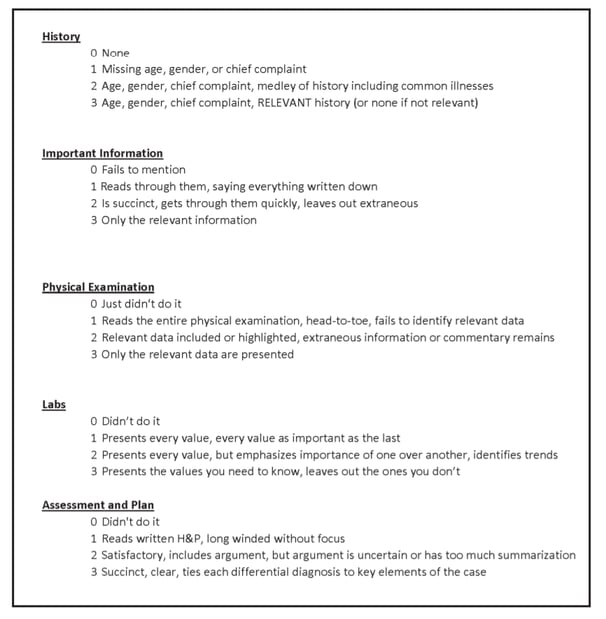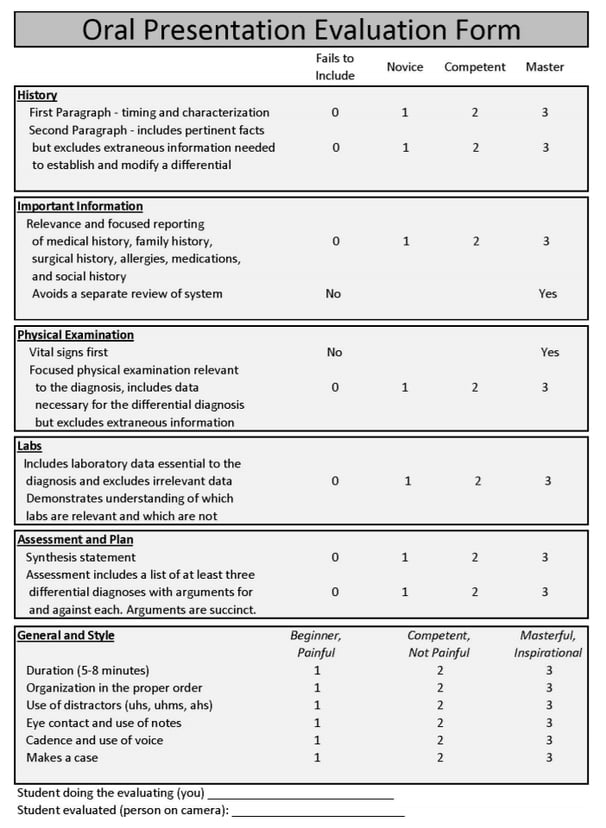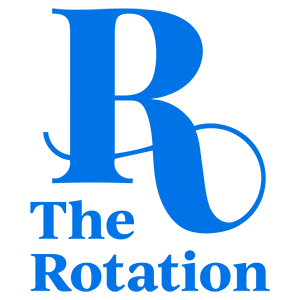Communication is taking on a heightened emphasis across all industries - and medicine is no different. The ability for a physician (be it a practicing doctor, resident, intern or medical student) to communicate the history, course, and current status of a patient is critical for successful patient care.
While everyone agrees on its importance, there is little alignment on how to best teach such skills. One method is through standardizing evaluations of oral presentations. By identifying the standard and then showing learners the gaps in their skills through evaluations, we can as a medical society improve the approach across all institutions.
The essence of oral case presentation lies in how focused and concise the matter is. The presentation needs to be limited to what the listeners need to comprehend on an immediate basis.
“An oral case presentation is NOT a simple recitation. It is a concise, edited presentation of the most essential information.” [1]
The role of the Faculty
There are certain steps faculty can take to improve the way we are educating students on oral case presentations. In the example demonstrated in this study, students periodically were evaluated on their own presentations while also evaluating the presentations of other students. By shifting the mindset of learners from ‘how much information can I relay’ to ‘how well did this person tell me what I need to know’ - students can learn key about what makes for a good oral case presentation. If we can help shift student mindset to considering the listener (a challenge for students when also synthesizing all the pertinent medical details of a case).
Showing examples of what a good case presentation is compared to a poor one is also a great way to set standards. In the same study, students watched two pre-recorded presentations. One of them was excellent while the other was abysmal, both of which were explained by the faculty.
Students additionally were given the documents below, which help to level set expectations. The first figure explains how scoring works. The second is the actual scorecard that students utilized when evaluating the presentations of their peers.
The figure below explains the scoring system consisting of various parameters including history of the patient, important information regarding the case, details of physical examination, presentation of the lab outcomes, and the general presentation skills. You can observe here that the range and selection of information is what differentiates a good presentation from a bad one. Excessive information is not the goal, rather focusing on what’s important and giving the precise amount of detail would command a better score in the self-evaluation.


Each element (as seen in the figure above) was aligned to the objectives while developing the criteria. The ultimate goal was to enable peer and self-evaluation without faculty commitment.

“To organize an oral presentation effectively, you must think critically about what is important with your patient, your differential diagnoses, and your plans.” [3]
Benefits of utilizing this approach
Using the tools mentioned above and with the help of technology, we can build on the concept of teaching through evaluation. As a result, the focus can now shift from faculty evaluation to peer evaluation, through a standardized assessment of how students can replicate the faculty evaluation process.
By adopting this method, the time taken by the faculty to impart spoken communication skills is greatly reduced. As the process of self-evaluation involves multiple layers of introspection, it results in intrinsic development of skills within the presenters.
This method focuses on how well a task is performed, as opposed to whether or not it is performed. This provides a scope for a true-to-life evaluation of the skills, instead of the score being simply binary. The points earned by the presenter for a particular task would vary from 0-3, which would highlight the level of their capabilities with regard to that specific task.
Furthermore, this method would help assess whether the traditional experience of presenting on the wards can be augmented merely by reviewing peers, thus significantly reducing the additional time burden for faculties.
Through this study, researchers have shown that by using peer and self-evaluation as instructional tools, oral case presentation skills can be developed efficiently. Based on the feedback received in the entrance and exit forms, efficacy of this method can be identified and fine-tuned. This provides a scope for faculties to reduce the time spent on evaluations, which can be utilized in a better manner to provide support to other care functions within the organization.
In summary, a few key take-aways including the following larger concepts:
-
Clarify what makes an excellent presentation: Oral presentations need to be focused and concise. The presenter must have an ability to identify and present the immediate information needed by the listener.
-
Clarify how this can be achieved by the presenter: Once the presenters are aware of what goes into creating an excellent oral case presentation, they need to know how they are evaluated, and what needs to be done to achieve a higher score.
-
Communicate the outcome: This would help the learners adapt to the evaluation system and align with the expectations of the faculty.
-
Apply the evaluation framework for students to communicate effectively through presentations.
References:
-
Figure 1 from https://www.ncbi.nlm.nih.gov/pmc/articles/PMC4795506/#i1524-5012-16-1-65-b12
-
Figure 2 from https://www.ncbi.nlm.nih.gov/pmc/articles/PMC4795506/#i1524-5012-16-1-65-b12
-
Figure 3 from https://www.ncbi.nlm.nih.gov/pmc/articles/PMC4795506/#i1524-5012-16-1-65-b12



